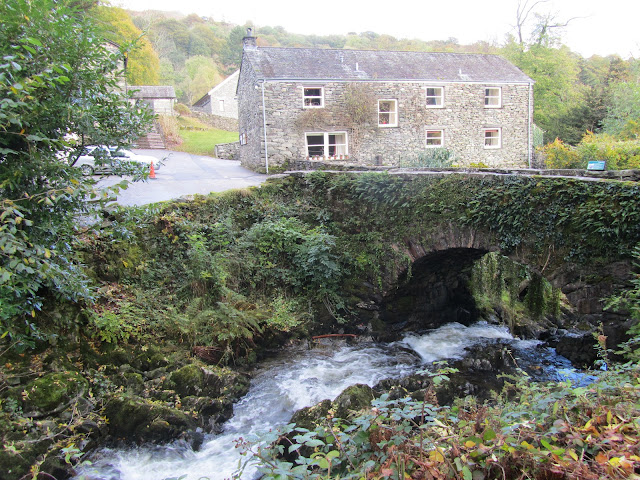Seen from the Langdale Boulders, the Langdale Pikes bear a strong resemblance to a pair of sleeping giants. It is a set of fells I have never climbed, so I was delighted when the lads agreed to spend a day walking them.
We set off from the Stickle Ghyll car park, walking the well defined path which passes Dungeon Ghyll Force,
before crossing and then following Stickle Ghyll Beck, climbing steadily upwards.
This is looking back towards the car park after about half an hour.
From a little higher, the view opens up eastward, towards Windermere in the distance.
Higher still and Coniston Old Man comes into view above the smaller fells which border the south side of Great Langdale.
The water was icy cold!
Eventually, we topped the rise and arrived at Stickle Tarn, a natural water filled corrie lying at an altitude of 1,552 feet (473m). In 1838 the tarn was enlarged by the building of a dam and its water supplies the inhabitants of the Langdale Valley.
On the other side of the tarn was our next objective, Pavey Ark. There is a grade 3 scramble called Jack's Rake, which runs diagonally across the face of this crag, from bottom to top. Considering my chunky boots and rucksack, I decided I would be happier taking the longer route - round the side!
The summit of Pavey Ark would be our first Langdale Pike - the smallest of the three and not one of the sleeping giants.
Lunch first :)



















































